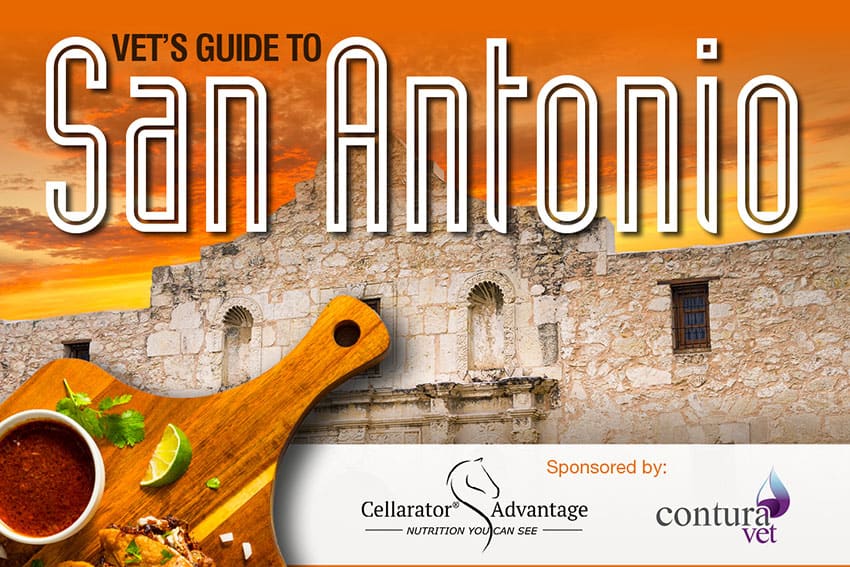
Vet’s Guide to San Antonio
With this easy-to-use Vet’s Guide to San Antonio, you can discover places to eat, drink, and enjoy during the 2022 AAEP Convention. Sponsored by ADM Equine and ConturaVet.
News and issues for equine health professionals

With this easy-to-use Vet’s Guide to San Antonio, you can discover places to eat, drink, and enjoy during the 2022 AAEP Convention. Sponsored by ADM Equine and ConturaVet.

The key concepts behind 6 orthobiologics available to equine veterinarians.

An equine internist explains how she makes testing decisions and interprets results.

Download a free copy of The Horse‘s Equine Practitioner Product Guide for information on equipment, supplies, and product specials for veterinarians.

Knowing what imaging and clinicopathologic tests to perform in what order is key to diagnosing challenging cases.

Dr. Lutz Goehring weighs in on what researchers have learned about equine herpesvirus-1, how it spreads, and how to prevent infection.

Here’s what researchers know about the use of bisphosphonates and future opportunities for further investigation.

A veterinarian describes what causes podotrochlosis and how practitioners diagnose and manage it.

Horses with injured stifles have the best chance of returning to full work following a scientifically planned rehabilitation process.

Because the hooves are integral to soundness, veterinarians and farriers should work together to give lame horses the best prognosis.

Researchers set out to learn if PET scans could predict and therefore help prevent potential catastrophic injuries in racehorses.

While ultrasound doesn’t always provide a definitive diagnosis, it can be a useful tool for gathering critical information.

A veterinarian explains how he uses serum amyloid A to diagnose many equine conditions, plus its limitations.

Find out how to get athletic horses with injuries to the large, complex stifle joint on the road to recovery.

An equine reproduction specialist reviews signs that suggest a mare is in foal and how to find out definitively.

Learn how veterinarians use ultrasound to diagnose many conditions and injuries in horses.
Stay on top of the most recent Horse Health news with
"*" indicates required fields